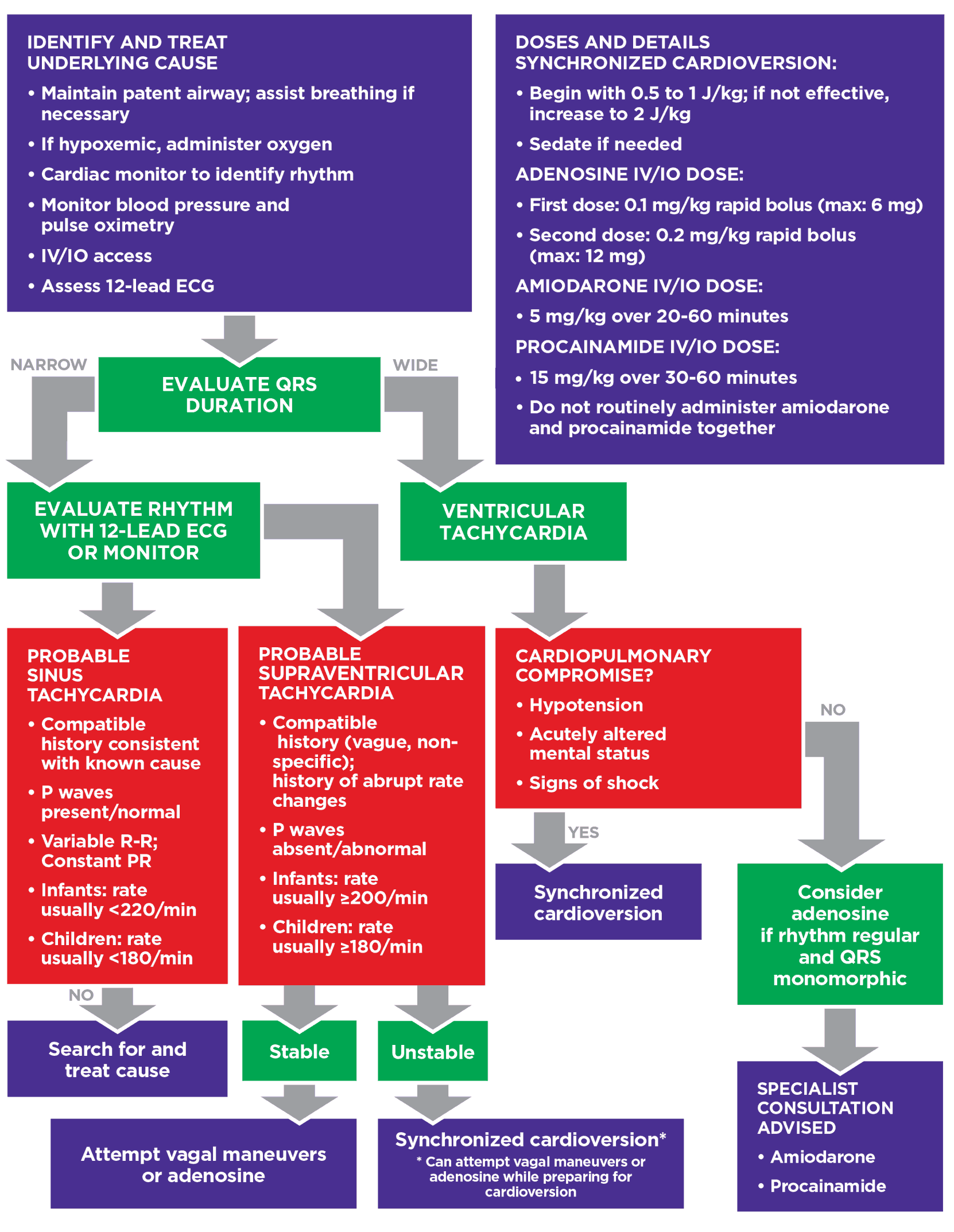Management of Tachycardia
Effective management of tachyarrhythmias in pediatric patients is crucial for emergency care professionals. Understanding the PALS tachycardia algorithm enables providers to quickly assess and treat life-threatening arrhythmias in children. This guide offers an overview of the key aspects of the PALS tachycardia algorithm, enhancing your ability to respond promptly during critical situations.
Importance of the PALS Tachycardia Algorithm
The PALS tachycardia algorithm is a systematic approach designed to assist clinicians in identifying and managing tachycardia in pediatric patients. It focuses on:
- Early Recognition: Identifying signs of tachyarrhythmias promptly.
- Accurate Diagnosis: Differentiating between sinus tachycardia, supraventricular tachycardia (SVT), and ventricular tachycardia (VT).
- Appropriate Intervention: Implementing the correct treatment based on the type of tachycardia and the patient’s stability.
By adhering to the PALS tachycardia algorithm, health care providers can improve patient outcomes and reduce the risk of progression to cardiac arrest.
Responding to Tachycardia
The initial management of tachyarrhythmia is to assess pulse and perfusion.

Figure 15
Key Steps of the PALS Tachycardia Algorithm
1. Assess and Support ABCs
- Airway: Ensure it is open and protected.
- Breathing: Provide oxygen and support ventilation if necessary.
- Circulation: Monitor heart rate, blood pressure, and perfusion.
2. Evaluate the Patient’s Condition
- Identify Symptoms: Look for signs of hemodynamic instability such as hypotension, altered mental status, signs of shock, or chest pain.
- Determine Stability: Assess whether the patient is stable or unstable.
3. Analyze the Rhythm
- ECG Monitoring: Obtain a 12-lead ECG if possible.
- QRS Duration:
- Narrow QRS (<0.09 sec): Likely SVT or sinus tachycardia.
- Wide QRS (≥0.09 sec): Possible VT or SVT with aberrancy.
4. Management Based on Rhythm and Stability
Stable Patients with Narrow QRS Tachycardia
- Possible SVT:
- Attempt vagal maneuvers (e.g., ice to the face, Valsalva maneuver).
- If vagal maneuvers are ineffective, administer adenosine.
Unstable Patients with Narrow QRS Tachycardia
- Immediate Synchronized Cardioversion:
- Initial dose: 0.5 to 1 J/kg.
- If not effective, increase to 2 J/kg.
Stable Patients with Wide QRS Tachycardia
- Consider Expert Consultation:
- Adenosine may be administered if the rhythm is regular and monomorphic.
- Antiarrhythmic Medications: Amiodarone or procainamide may be considered.
Unstable Patients with Wide QRS Tachycardia
- Immediate Synchronized Cardioversion:
- Initial dose: 0.5 to 1 J/kg.
- If not effective, increase to 2 J/kg.
5. Post-Intervention Care
- Monitor Patient: Continuously observe vital signs and cardiac rhythm.
- Identify Underlying Causes: Evaluate for potential triggers or underlying conditions.
- Prepare for Transport: If necessary, arrange for transfer to a facility with pediatric intensive care capabilities.
